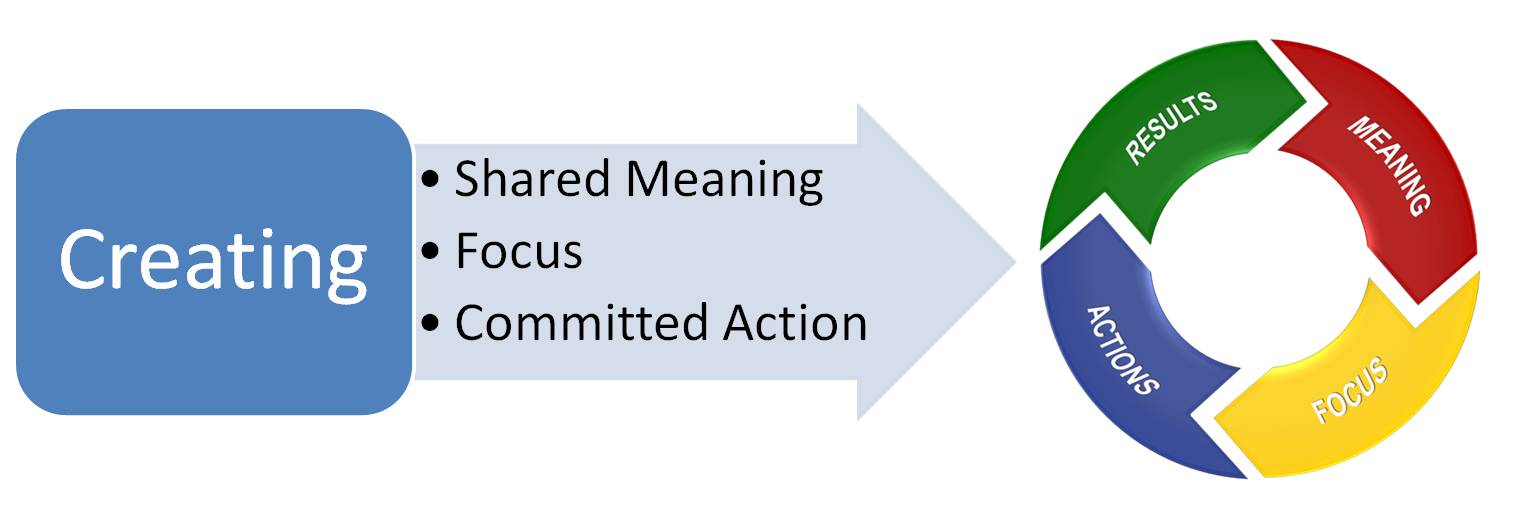Safety Leaders Group - Definition of Leadership
Safety Leadership is a process of self and social influence which maximises the efforts of yourself and others towards the achievement of a greater good.
What is shaping your ability to contribute to the safety culture?
This question is the most powerful question for a safety leader. Safety culture gets created by design or default. If you aren't steering it the way you believe it should be going, then it is like a ship without a rudder - it will go whatever way the winds and currents take it. Good safety leaders are steering their culture and they are steering themselves. They do the things they need to in order to make the difference they believe is needed. They are in the game - they choose to be responsible and they hold themselves accountable.
The answer has to do with learning/mastering two key lessons:
- The Science of Achievement and
- The Art of Relationships
Achievement and Relationship need to happen as part of a framework - CARES.
The Safety Leaders Group approach is based on our research which has been instrumental in the crafting of our definition of leadership -
Who CARES Wins -
Creating an Achievement oriented,
Relationship based, Endeavour Sustainably ®
By Creating, we mean a couple things. First of all, Creating means that you generate, produce, form, build, construct, invent, originate, initiate, conceive, or establish something. It is Action Oriented. It is also something new and often untried, so the best Leaders could also be called Pathfinders. Does anything in this description come close to implying that you can copy or imitate someone else and hope to succeed? No, Leadership is about creating the Relationship Base. Leadership is about creating the Achievement Orientation. Leadership is about creating the Endeavour.
Creating is an outcome of the decisions we make. There are three decisions that determine what we create:
- What Meaning we give something
- What we Focus on
- What Actions we take

We are making these three decisions every moment of our lives and what we decide, what choices we make, determines our destiny. If we are not clear, if we lack clarity, if we are not consciously making these decisions with a plan and an intent in mind, then we will never end up in the place we want to be.
As a safety leader you must know what you want to achieve and have a good idea in mind about what will get you there. If you don't know where you want to go then it doesn't matter which path you take. It is summed up well in the saying, "the reason most people don't achieve their goals, is that they never really set them in the first place".
Everything is created twice - first in our mind and then in the physical world. This is about an Integral Approach. To create our vision we must truly understand what an integral approach looks like and what it takes to achieve. First it happens in the mind - we get clear about what we value, what we want and what it looks like. This is our Relationship to the goal. Only then do we apply the science of Achievement to create a management plan for how we make it happen.

What we choose to Focus on as a safety leader drives the safety climate. e.g. What emotion we bring to a situation, what our relationship is to our past, the present and the future, and are we focused on ourselves or others? - all are critical aspects of focus. The best safety leaders focus on what they know is right and needs to happen with a laser like intensity. Others see that, people know what you care about and what is important to you - that is what focus is about. There are many options and they communicate our values. Leaders are typically focussed on such things as safety, production, cost, quality, schedule, profit. Which ones they focus on, and what gets their attention (and emotion) , and where they spend their time are signals to everyone they work with about what matters to them. Do you "Walk the Talk?"
It has been said:
" What you do, how you act, shouts so loudly at me, that I can't hear what you're saying"

What we make things mean drives endeavour. As a leader you get to decide what an outcome of event means. What we make something mean is a factor of our character - our character, our belief, our tolerance, our tenacity, our patience and understanding are a few measures of character.
By Achievement oriented, we mean that there is an objective in mind – a goal we deeply wish to attain. That goal is foremost in our thinking, our doing, and in particular in our being. The goal drives our planning and our actions. The research reinforces what we intuitively feel; that without achievement orientation groups tend to muddle along. This orientation to achieve is as critical in safety as it is in profitability.

By Relationship based, we mean that effective leadership, the ability to influence others and accomplish what we want, is based in the strength and depth of our relationships. In other words, our ability to relate to others establishes the potential we are capable of meeting. That relationship is not limited to our interpersonal relationships, which are essential, but also our relationship to the subject. Like the subject of safety. How deep is our understanding? Is it superficial, or do we really, truly understand? In Safety, the depth of our relationship is defined by our “Being” and our “Doing” – but as the research shows, not by our “Doing” alone. It is the understanding of who we are – our “being” – that gives us the strength of conviction to prevail.
Endeavour is defined as a “purposeful or industrious undertaking (especially one that requires effort or boldness)” or an “earnest and conscientious activity intended to do or accomplish something”. It is a journey toward accomplishment.
Safety Leadership requires a complete appreciation of the subject and the participants, a clear understanding of the objective, and committed action. Anything else will fail to deliver. When we truly understand this, walking the talk is not an issue, nor is practicing what we preach an issue, because we know who we are. That knowledge of who we are (our Being) means we can only act (our Doing) in accordance with who we are. We are consistently guided by our strength of character, by our integrity, by the depth of our Being.
The current plateaued safety performance, in the face of this understanding and the opportunity it presents for real performance improvement, begs the question once asked by Bobby Kennedy:
“If not us, who? If not now, when?”

